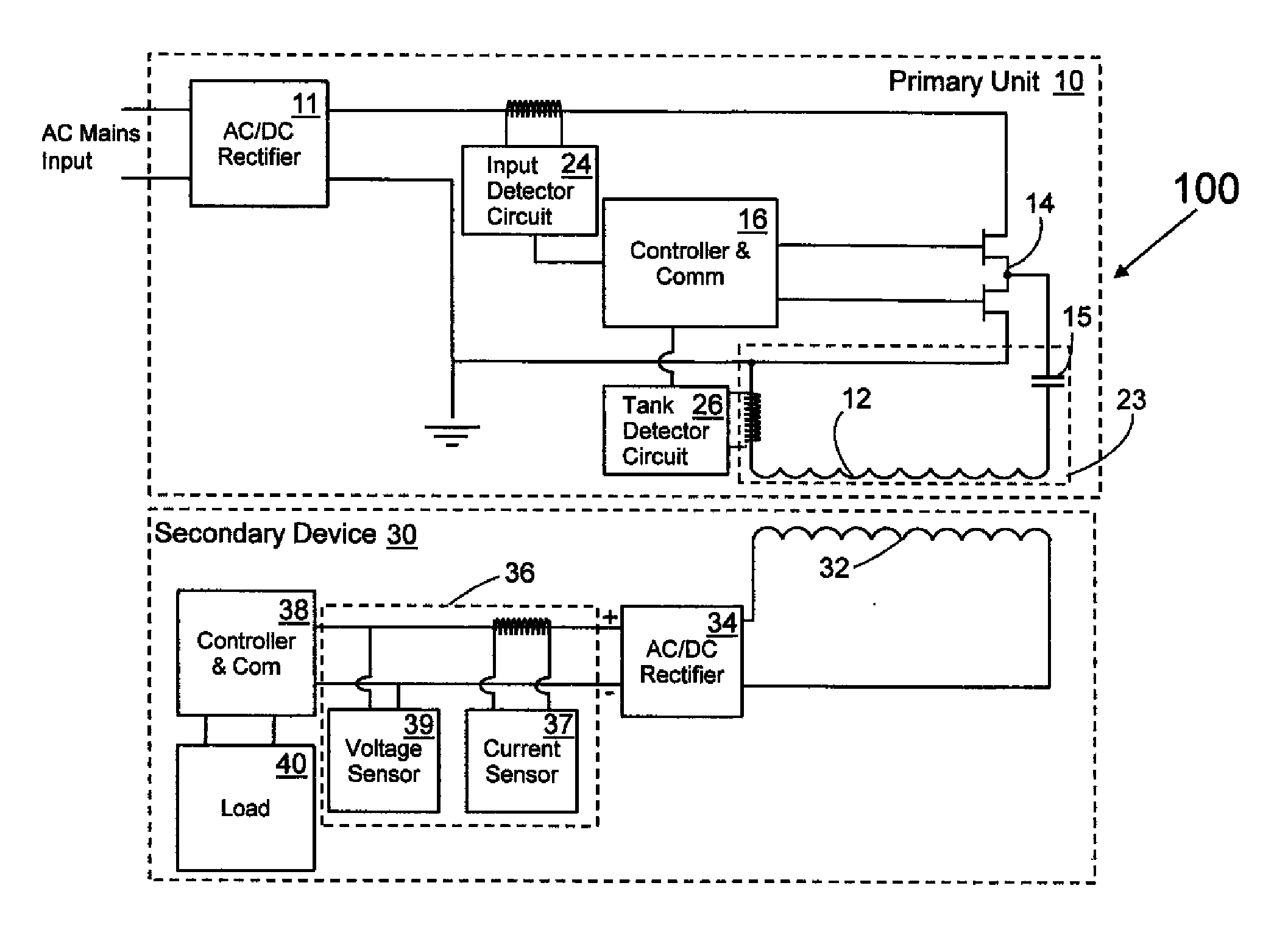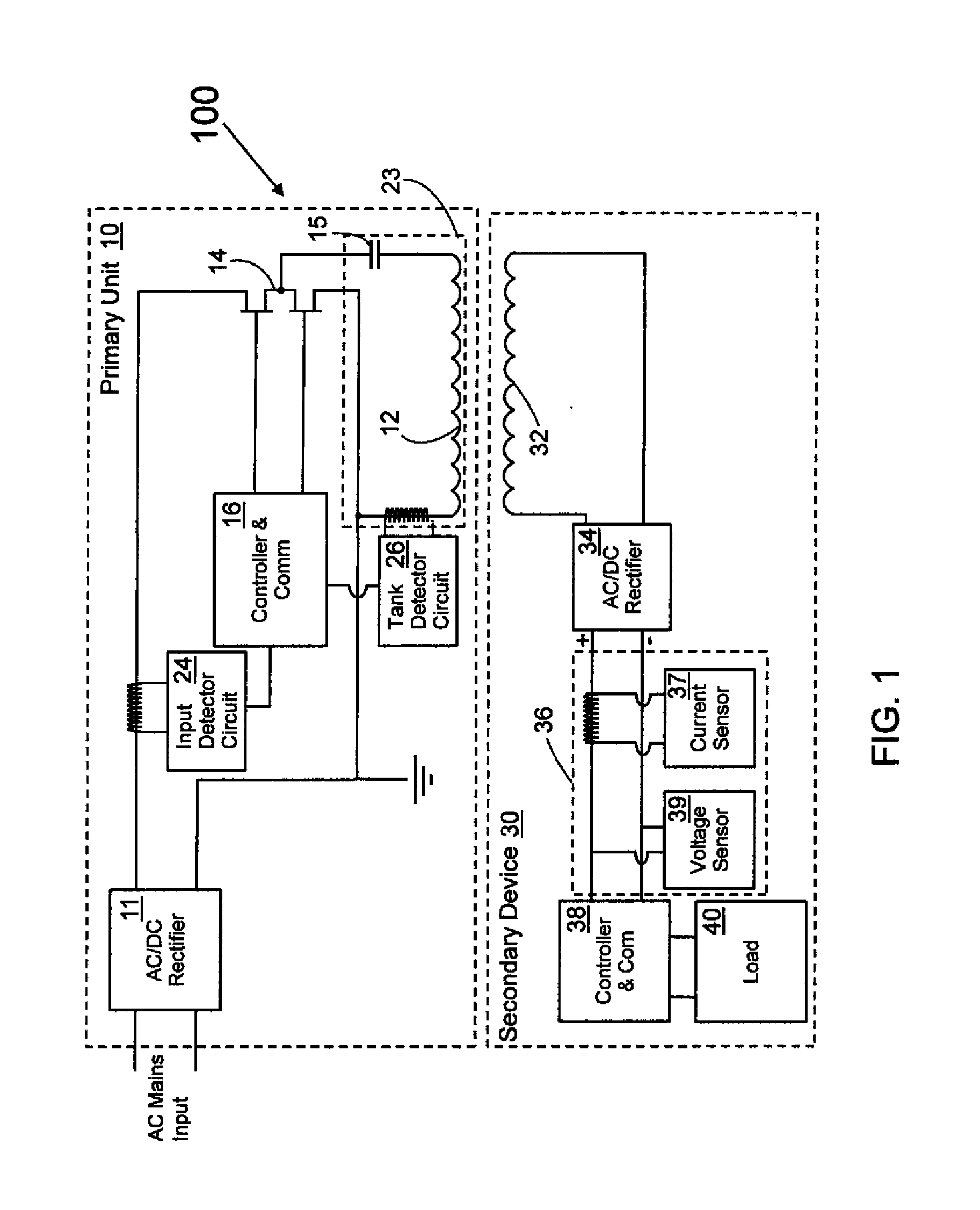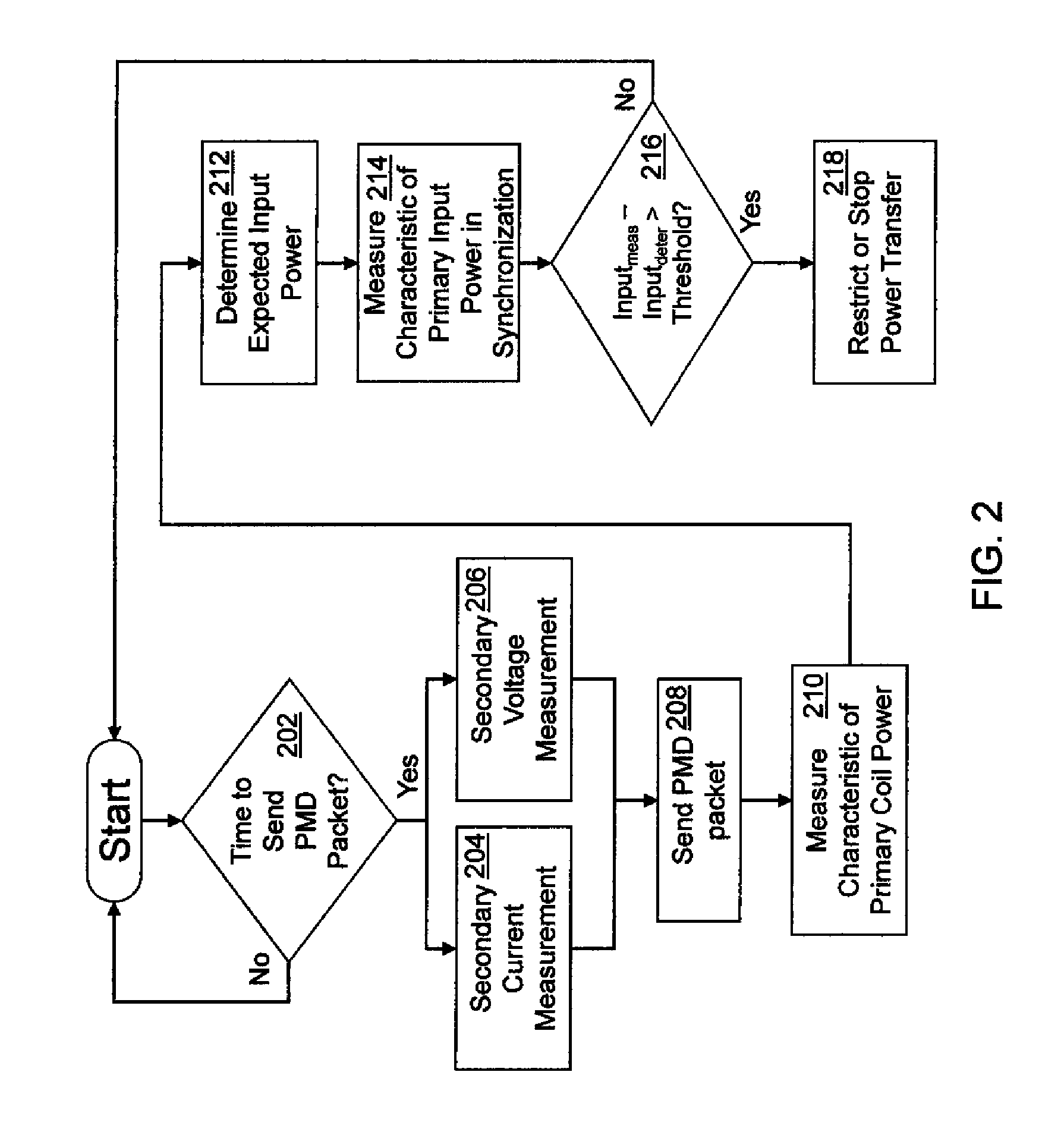Input parasitic metal detection
a technology of input parasitic metal detection and power loss accounting, which is applied in non-electric variable control, process and machine control, instruments, etc., can solve the problems of increased ohmic losses and difficulty in distinguishing
- Summary
- Abstract
- Description
- Claims
- Application Information
AI Technical Summary
Benefits of technology
Problems solved by technology
Method used
Image
Examples
Embodiment Construction
[0017]The present invention is directed to systems and methods for accounting for power loss in the system and understanding whether unaccounted for losses are detrimental to operation. For example, their may be parasitic metal, a damaged component, or something else in the electromagnetic field causing power loss. In one embodiment, primary coil current, secondary current, and secondary voltage are utilized to determine an expected primary input current. When the expected primary input current is properly determined, it can be compared to the measured primary input current in order to detect whether and in some embodiments, how much, unaccounted power loss is present.
[0018]Input current varies with the power lost or consumed in the contactless power supply system. For example, the input current is affected by parasitic metal losses, the amount of power delivered to the load, primary and secondary rectification losses, primary switching losses, losses in the tank circuit, losses due...
PUM
 Login to View More
Login to View More Abstract
Description
Claims
Application Information
 Login to View More
Login to View More - R&D
- Intellectual Property
- Life Sciences
- Materials
- Tech Scout
- Unparalleled Data Quality
- Higher Quality Content
- 60% Fewer Hallucinations
Browse by: Latest US Patents, China's latest patents, Technical Efficacy Thesaurus, Application Domain, Technology Topic, Popular Technical Reports.
© 2025 PatSnap. All rights reserved.Legal|Privacy policy|Modern Slavery Act Transparency Statement|Sitemap|About US| Contact US: help@patsnap.com



